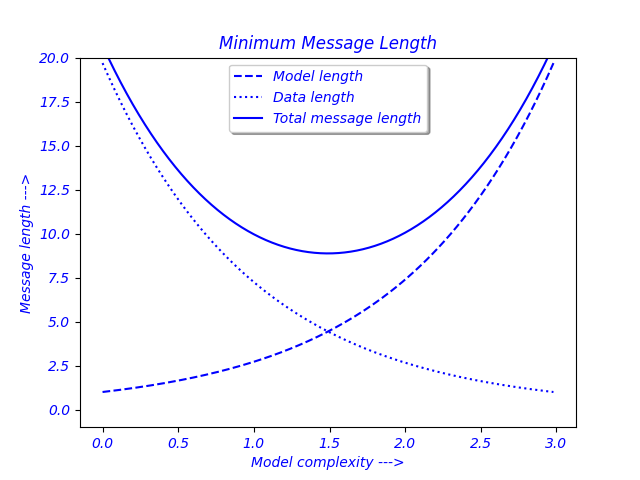Nota
Haga clic aquí para descargar el código de ejemplo completo
Findobj Demostración #
Encuentre recursivamente todos los objetos que coincidan con algunos criterios

import numpy as np
import matplotlib.pyplot as plt
import matplotlib.text as text
a = np.arange(0, 3, .02)
b = np.arange(0, 3, .02)
c = np.exp(a)
d = c[::-1]
fig, ax = plt.subplots()
plt.plot(a, c, 'k--', a, d, 'k:', a, c + d, 'k')
plt.legend(('Model length', 'Data length', 'Total message length'),
loc='upper center', shadow=True)
plt.ylim([-1, 20])
plt.grid(False)
plt.xlabel('Model complexity --->')
plt.ylabel('Message length --->')
plt.title('Minimum Message Length')
# match on arbitrary function
def myfunc(x):
return hasattr(x, 'set_color') and not hasattr(x, 'set_facecolor')
for o in fig.findobj(myfunc):
o.set_color('blue')
# match on class instances
for o in fig.findobj(text.Text):
o.set_fontstyle('italic')
plt.show()